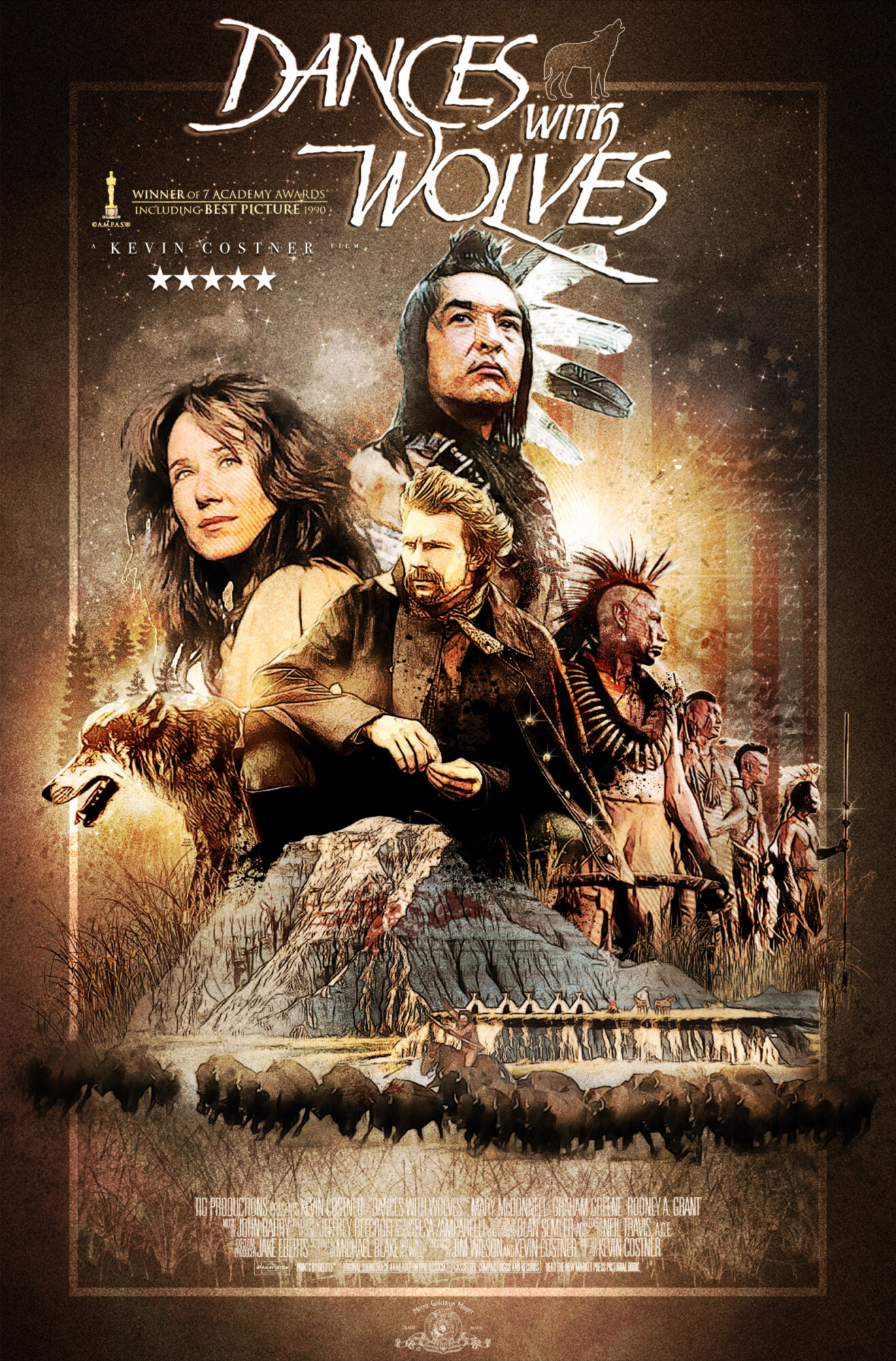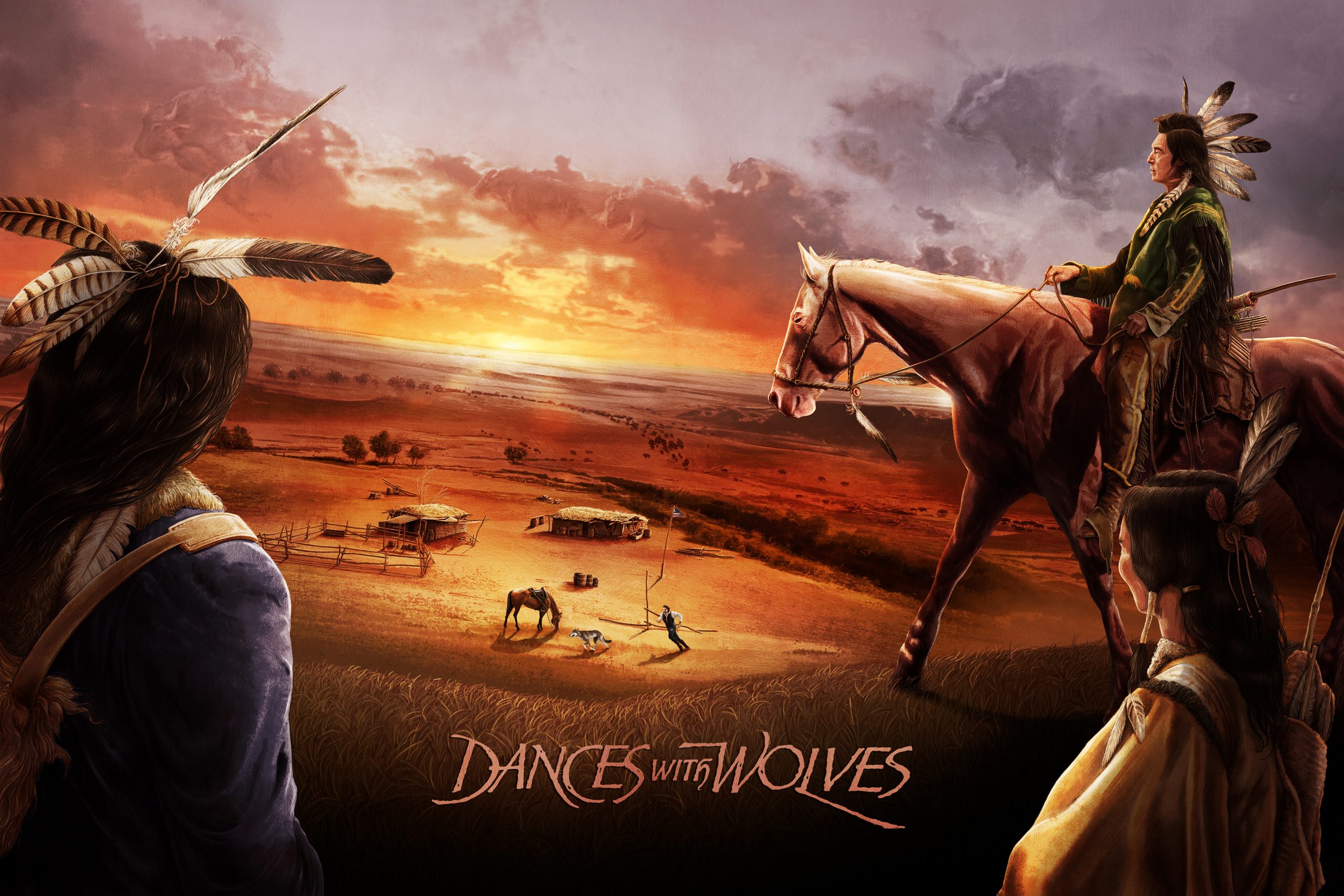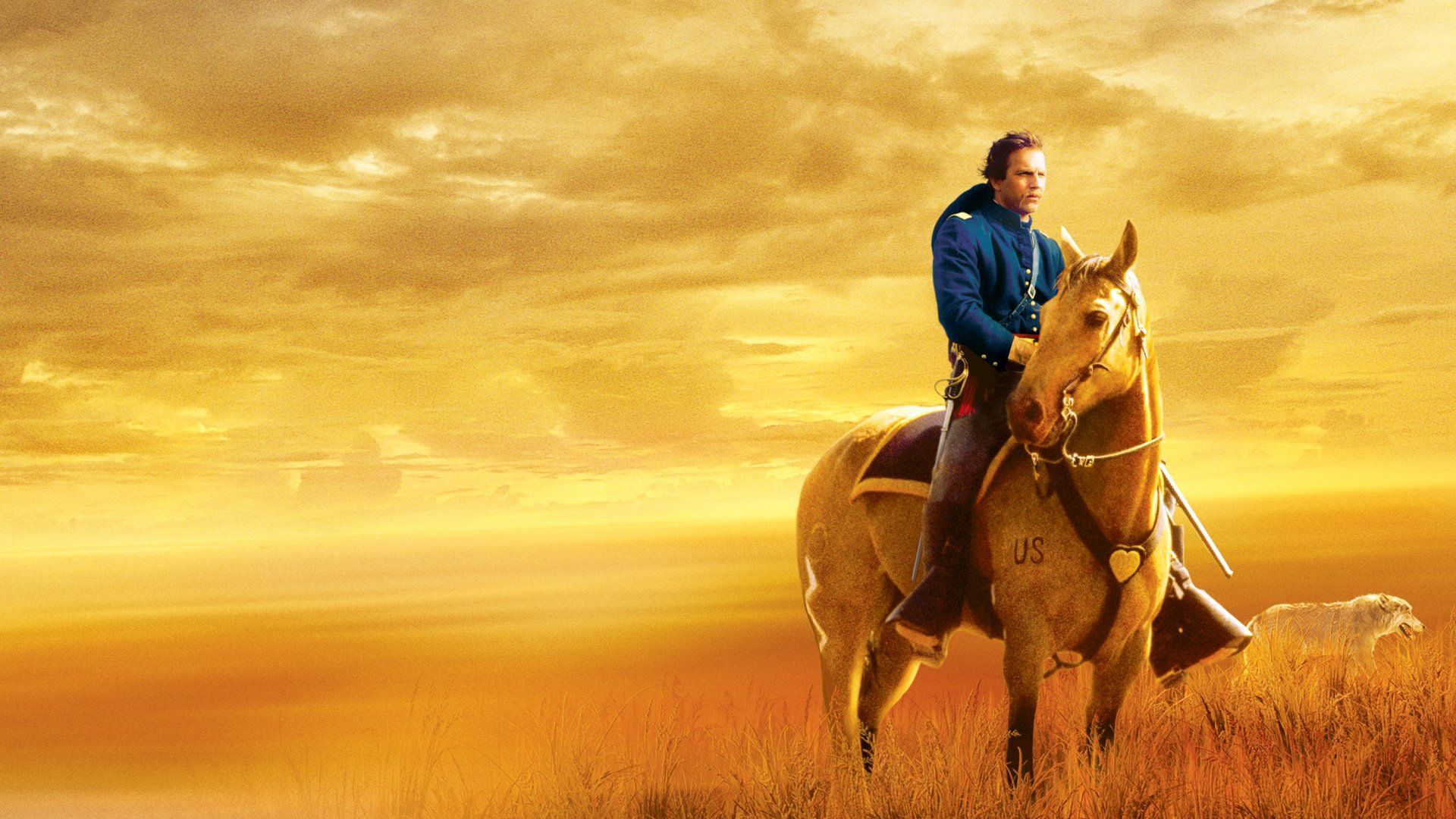Dances With Wolves Oscar Controversy: A Deep Dive Into The Turbulent Debate
Picture this: you're sitting in front of the TV on Oscar night, popcorn in hand, ready to witness cinematic history. And then it happens—Dances With Wolves sweeps the awards, winning seven Oscars, including Best Picture and Best Director. But not everyone was celebrating. Beneath the glittering surface of Hollywood's biggest night, a storm of controversy brewed, one that would leave lasting scars on both the film and the industry. Welcome to the world of Dances With Wolves Oscar controversy—a tale of accolades, accusations, and artistic integrity.
Now, let's get real for a moment. Dances With Wolves, directed by Kevin Costner, was a massive hit when it premiered in 1990. It was hailed as a groundbreaking film that redefined the Western genre, offering a fresh perspective on Native American culture and the American frontier. But not everyone was on board with the hype. Critics, historians, and even members of the Native American community raised serious concerns about the film's portrayal of history, culture, and its claim to authenticity. And that’s where the controversy begins.
As we dive deeper into this story, you’ll discover the layers of debate surrounding Dances With Wolves' Oscar triumph. Was it a well-deserved victory for a film that dared to challenge the status quo? Or was it a case of Hollywood glamorizing a problematic narrative? Stick around, because this is more than just a movie—it's a cultural conversation that continues to resonate today.
- Guitar Hero Rock The 80s A Journey Through Time With Power Chords And Headbanging
- Age Vijay The Rising Star Of The Entertainment Industry
Table of Contents
- The Backstory of Dances With Wolves
- Dances With Wolves' Oscar Triumph
- Criticism and Controversy
- The Question of Authenticity
- The Native American Perspective
- Impact on the Film Industry
- Historical Context and Accuracy
- Long-Term Effects on Hollywood
- Kevin Costner's Role in the Controversy
- Final Thoughts: Is It Worth the Hype?
The Backstory of Dances With Wolves
Let’s rewind to the early '90s when Dances With Wolves first hit the silver screen. Directed by and starring Kevin Costner, the film tells the story of Lieutenant John Dunbar, a Civil War hero who finds himself stationed in the remote American frontier. There, he encounters a Lakota Sioux tribe, forming a bond that challenges his understanding of culture, identity, and humanity. The film was a massive undertaking, shot on location in South Dakota, with a budget that many thought was too ambitious for a first-time director.
But the real magic of Dances With Wolves wasn’t just in its sweeping landscapes or epic battle scenes—it was in its attempt to humanize Native Americans, portraying them not as the stereotypical "savages" of Western films, but as complex, intelligent individuals with rich traditions and deep connections to their land. This was groundbreaking at the time, and it resonated with audiences who were hungry for stories that challenged the Hollywood status quo.
Yet, even as the film was celebrated for its daring approach, whispers of controversy began to circulate. Some critics argued that the film wasn’t as revolutionary as it claimed to be, pointing out that its portrayal of Native Americans still leaned on romanticized stereotypes. Others questioned the film's historical accuracy, suggesting that it glossed over the harsh realities of colonization and conflict. And so, the debate began.
- Mission To Mars Humanitys Leap Into The Red Planet
- Melissa Mccarthys Net Worth The Untold Story Of Hollywoods Funniest Woman
Key Facts About Dances With Wolves
- Released in 1990, Dances With Wolves was directed by Kevin Costner.
- The film won seven Oscars, including Best Picture and Best Director.
- It was praised for its cinematography, score, and portrayal of Native American culture.
- However, it faced criticism for its romanticized depiction of the Lakota Sioux and historical inaccuracies.
Dances With Wolves' Oscar Triumph
When Dances With Wolves swept the Oscars in 1991, it was seen as a watershed moment for Hollywood. The film's success was a testament to its ambition, its storytelling, and its willingness to tackle difficult subjects. But the Oscars are never just about the films—they’re about the politics, the trends, and the people behind the scenes. And in the case of Dances With Wolves, the victory was both celebrated and scrutinized.
Some in the industry praised the film for breaking new ground, calling it a much-needed departure from the usual Hollywood fare. Others, however, saw it as a case of Hollywood pandering to its own sense of self-importance, rewarding a film that was more spectacle than substance. The debate raged on, with critics and audiences alike weighing in on whether the film truly deserved its accolades.
But here’s the thing: the Oscars are rarely just about the films. They’re about the message they send, the trends they set, and the conversations they spark. And in the case of Dances With Wolves, the conversation was anything but simple.
Criticism and Controversy
Now, let’s talk about the elephant in the room: the criticism. Dances With Wolves may have won over the Academy, but it didn’t win over everyone. Critics from all corners of the industry and beyond took issue with various aspects of the film, from its portrayal of Native Americans to its historical accuracy. Some even accused the film of perpetuating the same stereotypes it claimed to dismantle.
One of the biggest criticisms was that the film romanticized the Native American experience, presenting the Lakota Sioux as noble savages who lived in perfect harmony with nature. While this might sound like progress compared to the outright villainy of earlier Westerns, some argued that it was just another form of stereotyping—one that ignored the complexities and struggles of real Native American communities.
Others pointed out that the film glossed over the brutal realities of colonization, focusing instead on the personal journey of its white protagonist. This, critics argued, was a classic case of Hollywood prioritizing the white gaze over the Native American voice. And while the film may have been well-intentioned, its execution left much to be desired.
Common Criticisms
- Romanticized portrayal of Native Americans
- Focus on the white protagonist rather than Native American perspectives
- Historical inaccuracies and oversimplification of complex events
The Question of Authenticity
When it comes to films about Native American culture, the question of authenticity is always on the table. And in the case of Dances With Wolves, it’s a question that can’t be ignored. The film made a valiant effort to portray Native American life with respect and accuracy, hiring Native American actors and consultants to ensure authenticity. But was it enough?
Some praised the film for its attention to detail, noting that the use of the Lakota language and the inclusion of Native American cultural practices added depth and realism to the story. Others, however, argued that the film’s portrayal was still rooted in Hollywood conventions, lacking the nuance and complexity of real Native American experiences.
Ultimately, the question of authenticity is a tricky one. Can a film made by outsiders ever truly capture the essence of a culture that is not their own? Or is it doomed to fall short, no matter how well-intentioned it may be?
The Native American Perspective
So, what do Native Americans themselves think about Dances With Wolves? The answer, unsurprisingly, is complicated. Some praised the film for its respectful portrayal of Native American culture, noting that it was a step in the right direction. Others, however, were more critical, pointing out that the film still perpetuated harmful stereotypes and failed to give Native American voices the platform they deserved.
One of the most vocal critics was Vine Deloria Jr., a prominent Native American activist and author, who argued that the film was more about white guilt than Native American empowerment. He believed that the film’s focus on the white protagonist, rather than the Native American characters, was a missed opportunity to tell a truly Native American story.
Others, however, saw the film as a starting point for greater representation in Hollywood, a call to action for Native American filmmakers to take control of their own narratives. And while the film may not have been perfect, it did spark important conversations about representation and authenticity in the film industry.
Key Native American Voices
- Vine Deloria Jr.: Criticized the film for its focus on white guilt and lack of Native American agency.
- Native American actors and consultants: Praised the film for its attention to detail and use of the Lakota language.
- Native American filmmakers: Saw the film as a catalyst for greater representation in Hollywood.
Impact on the Film Industry
Now, let’s talk about the big picture: how did Dances With Wolves impact the film industry? In the years following its release, the film was often cited as a turning point in Hollywood’s approach to Native American stories. It sparked conversations about representation, authenticity, and the importance of diverse voices in filmmaking.
But the film’s legacy is not without its challenges. While it opened the door for more Native American stories to be told, it also set a precedent for films about marginalized communities to be told through a white lens. This has led to ongoing debates about who gets to tell these stories and how they should be told.
Despite these challenges, Dances With Wolves remains a significant film in the history of Hollywood. It challenged conventions, sparked important conversations, and left a lasting impact on the industry. And while its portrayal of Native American culture may not have been perfect, it was a step in the right direction—one that paved the way for future films to tackle similar subjects with greater nuance and authenticity.
Historical Context and Accuracy
When it comes to historical films, accuracy is key. And in the case of Dances With Wolves, the question of historical accuracy is a hotly debated one. The film attempts to portray the complex relationship between Native Americans and settlers during the late 19th century, but how well does it succeed?
Some historians praised the film for its attention to detail, noting that it accurately depicted the clothing, language, and cultural practices of the Lakota Sioux. Others, however, pointed out that the film glossed over the harsh realities of colonization, focusing instead on the personal journey of its white protagonist. This, critics argued, was a missed opportunity to tell a more complete and nuanced story.
Ultimately, the film’s historical accuracy is a mixed bag. While it gets some things right, it also falls short in others, leaving audiences with a somewhat incomplete picture of the era it depicts.
Long-Term Effects on Hollywood
So, what has been the long-term impact of Dances With Wolves on Hollywood? In the years since its release, the film has been both celebrated and criticized for its portrayal of Native American culture. It has sparked important conversations about representation, authenticity, and the importance of diverse voices in filmmaking.
But the film’s legacy is not without its challenges. While it opened the door for more Native American stories to be told, it also set a precedent for films about marginalized communities to be told through a white lens. This has led to ongoing debates about who gets to tell these stories and how they should be told.
Despite these challenges, Dances With Wolves remains a significant film in the history of Hollywood. It challenged conventions, sparked important conversations, and left a lasting impact on the industry. And while its portrayal of Native American culture may not have been perfect, it was a step in the right direction—one that paved the way for future films to tackle similar subjects with greater nuance and authenticity.
Kevin Costner's Role in the Controversy
And finally, let’s talk about Kevin Costner. As both the director and star of Dances With Wolves, Costner played a pivotal role in shaping the film’s narrative and its reception. Some praised him for his bold vision and commitment to authenticity, while others criticized him for his perceived lack of understanding of Native American culture.
Costner has often defended the film, arguing that it was a sincere attempt to tell a story that had long been ignored by Hollywood. He has also acknowledged the film’s shortcomings, noting that it was a product of its time and the limitations of its creators.
Ultimately, Costner’s role in the Dances With Wolves controversy is complex. He was both a trailblazer and a target of criticism, a man who dared to challenge the status quo but also faced the consequences of his choices.
Final Thoughts: Is It Worth the Hype?
So, what’s the verdict on



Detail Author:
- Name : Roselyn Langosh
- Username : karli.miller
- Email : raul.miller@gmail.com
- Birthdate : 1974-01-19
- Address : 9727 Creola Knoll Apt. 238 Bartellhaven, MS 36827
- Phone : 980-780-1264
- Company : Maggio-O'Keefe
- Job : Automotive Glass Installers
- Bio : Et necessitatibus perspiciatis deleniti minima et. Maiores inventore ut omnis quod nam velit. Reiciendis iste ut sit.
Socials
tiktok:
- url : https://tiktok.com/@francesca7953
- username : francesca7953
- bio : Qui excepturi suscipit et recusandae velit qui.
- followers : 3240
- following : 1906
instagram:
- url : https://instagram.com/francesca7319
- username : francesca7319
- bio : Delectus natus vel velit officia dolorem. Culpa quae ut illum libero.
- followers : 3244
- following : 2255